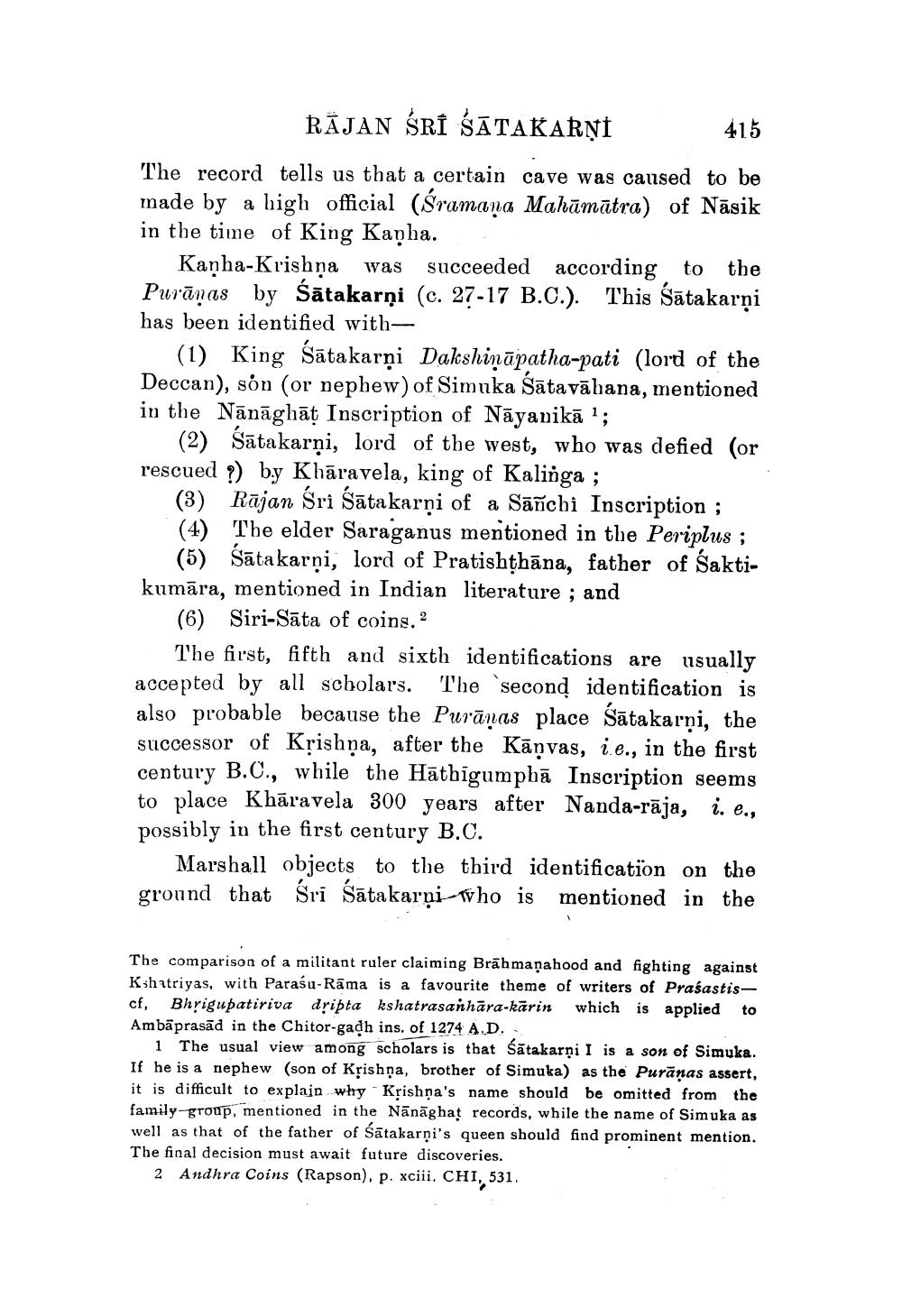________________
RAJAN ŚRI ŚĀTAKARŅI
415
The record tells us that a certain cave was caused to be made by a high official (śramana Mahāmātra) of Nāsik in the time of King Kaụha.
Kaņha-Krishṇa was succeeded according to the Purānas by śātakarņi (c. 27-17 B.C.). This Šātakarņi has been identified with
(1) King śāta karņi Dakshinūpatha-pati (lord of the Deccan), són (or nephew) of Simuka sātavābana, mentioned in the Nānāghāt Inscription of Nāyanikā ?;
(2) Śātakarņi, lord of the west, who was defied (or rescued ?) b.y Khāravela, king of Kalinga ;
(3) Rājan Sri Šāta karņi of a Sāñchi Inscription ; (4) The elder Saraganus mentioned in the Periplus ;
(5) Sātakarņi, lord of Pratishthāna, father of Saktikumāra, mentioned in Indian literature ; and
(6) Siri-Sāta of coins.
The first, fifth and sixth identifications are usually accepted by all scholars. The second identification is also probable because the Purānas place Śātakarņi, the successor of Krishṇa, after the Kāņvas, i.e., in the first century B.C., while the Hātbigumpbā Inscription seems to place Khāravela 300 years after Nanda-rāja, i. e., possibly in the first century B.C.
Marshall objects to the third identification on the ground that Sri Sātakarņi-who is mentioned in the
The comparison of a militant ruler claiming Brāhmaṇahood and fighting against Kshatriyas, with Paraśu-Rāma is a favourite theme of writers of Prasastiscf, Bhrigupatiriva dripta kshatrasanhāra-kārin which is applied to Ambāprasād in the Chitor-gadh ins, of 1274 A.D.
1 The usual view among scholars is that Śătakarņi I is a son of Simuka. If he is a nephew (son of Kțishņa, brother of Simuka) as the Puranas assert, it is difficult to explain why Krishna's name should be omitted from the family group, mentioned in the Nānāghat records, while the name of Simuka as well as that of the father of Satakarņi's queen should find prominent mention. The final decision must await future discoveries.
2 Andhra Coins (Rapson), p. xciii. CHI, 531.




